By Emma Park
This October saw ceramics exhibited at two of the leading London fairs of the year: Frieze, for contemporary art, and PAD London, for collectible design. The ceramics on display at PAD generally gave the impression of being imposing statement pieces for display in a grand entertainment space – reflecting the interests of the very well-heeled clientèle who glided smoothly between the stands. In contrast, the ceramics at Frieze, as if echoing the sartorial idiosyncrasies of its guests, were generally more experimental and representational than at PAD; they also constituted a much smaller proportion of the total number of objects on display. Nevertheless, the showing at Frieze was still strong, and it was clear that ceramics is firmly established in the contemporary art world.
In particular, Frieze featured ‘Smoke‘, a ‘curated section’ dedicated to six international artists in ceramics – while the art of ceramics itself was described as ‘one of the most impactful traditions in contemporary art, transcending Western art history into the depths of pre-colonial times.’ The works were selected by Pablo José Ramírez, a curator at the Hammer Museum Los Angeles, and focused on tracing the connection between ‘non-Western histories’, ceramics, and the natural landscape, including the smoke, smell, colour, texture and sound evoked by clay – features which were all ‘pulsating manifestations of life within soil’.
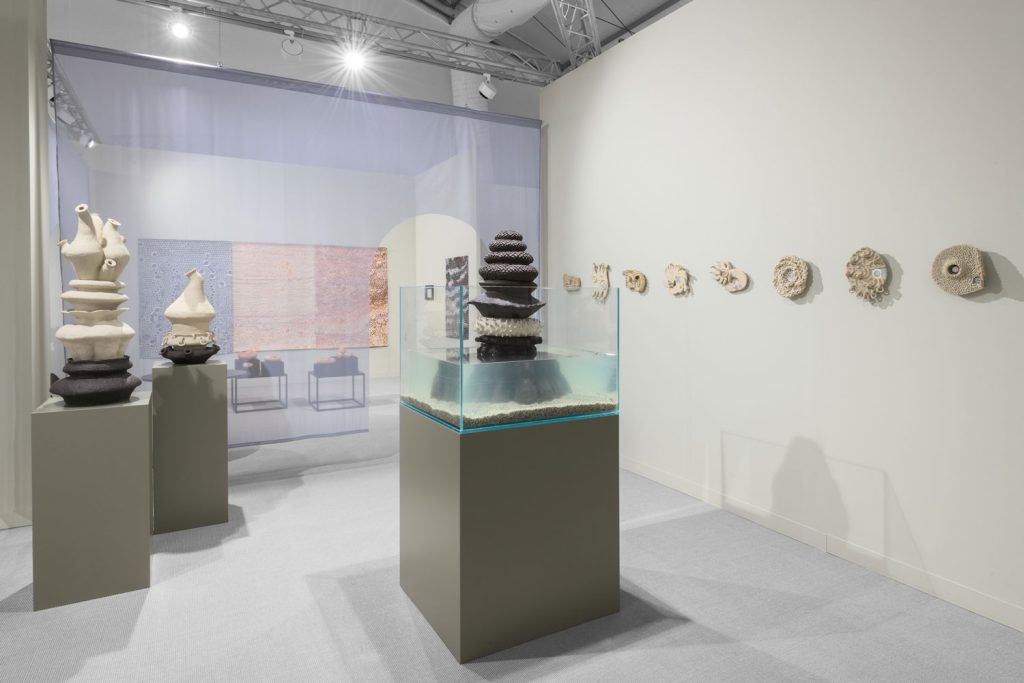
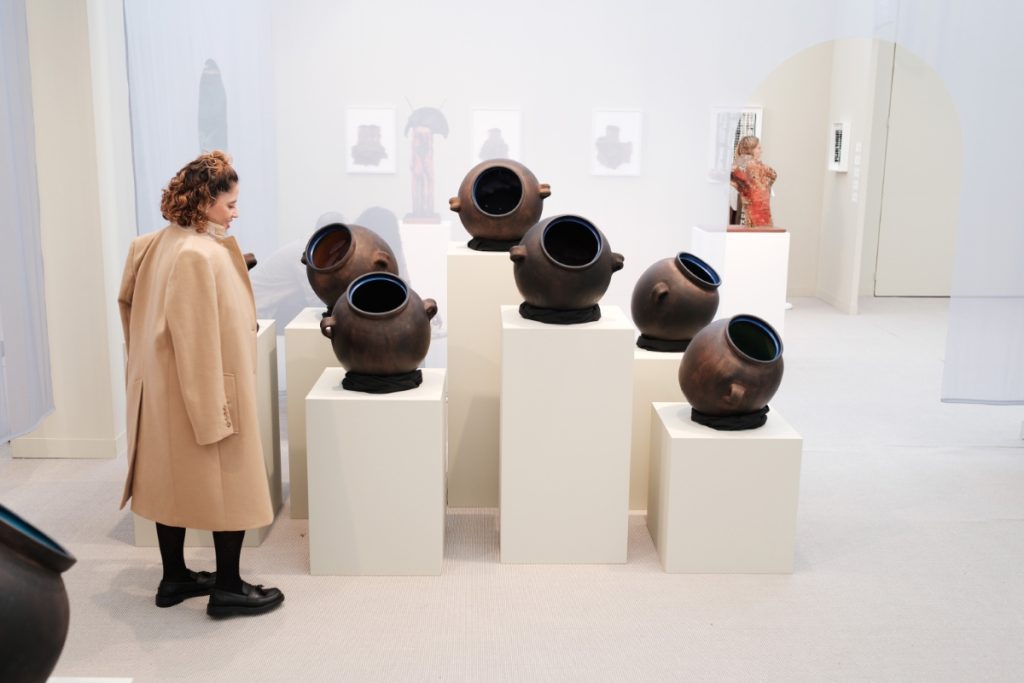
Notable among the displays in this section was One Step Forward and I am No Longer in the Same Place by the Brazilian ceramist Ayla Tavares, represented by Galeria Athena (Rio de Janeiro) and Hatch (Paris). This included wall pieces – a format that currently seems to be having a moment – from a series entitled Matéria Matéria. Each of the pieces was designed to be about the size of Tavares’s open palms next to each other. Made in grey and cream ceramic, moulded into mysterious organic and totemic shapes, with cameo windows containing black and white sketches inserted after firing, the pieces evoke the very slow growth of natural matter like stalactites or fossils. Some also embody faux-naïve shapes, echoed in the cameos, that suggest ancient magical symbols. For instance, Redoing Andromeda incorporates the images of a hand, a fish, a star and a snake that allude to the different stories told about the titular constellation in different cultures. Also on display was Uma forma sempre úmida (‘An always moist form’), a larger sculpture consisting of layers of clay resembling sponges, coral or shells, which rested on a bed of shingle in an open-topped tank of water.
The Smoke section also displayed a collection of mixed media work, including ceramics, by the Tz’utujil Maya artist Manuel Chavajay, represented by Pedro Cera Gallery. Chavajay, who comes from the town of San Pedro La Laguna on the shores of Lake Atitlán in Guatemala, uses his art to protest against the lake’s pollution from over-development. The display included terracotta amphorae in traditional forms, which, however, had been given a dark external stain to suggest engine oil, and were painted on the inside with views of the night sky.
Outside Smoke, the other ceramics on display at Frieze incorporated a variety of styles and themes. At the more abstract end was Crimson Tides, an intriguing abstract, semi-representational sculpture by Cameron Jamie, an American-born mixed media artist based in Paris, whose monograph will be published by Phaidon on 7 November. Presented by Lodovico Corsini, the sculpture consisted of a tall irregular column that had been kneaded again and again into a precariously balanced anthropomorphic form, with a thick red glaze and holes and dents suggestive of eyes or a mask. Also on the abstract side were two folded and warped sculptures by the New York artist Arlene Shechet, showing with Pace gallery: Spring to Summer: Together, in a rough, powdery black glaze, and Nearly Autumn: Together (2024), in a deep blue glaze with two teardrops of red and green glass running down one side, and a hole in the other side suggestive of an eye.
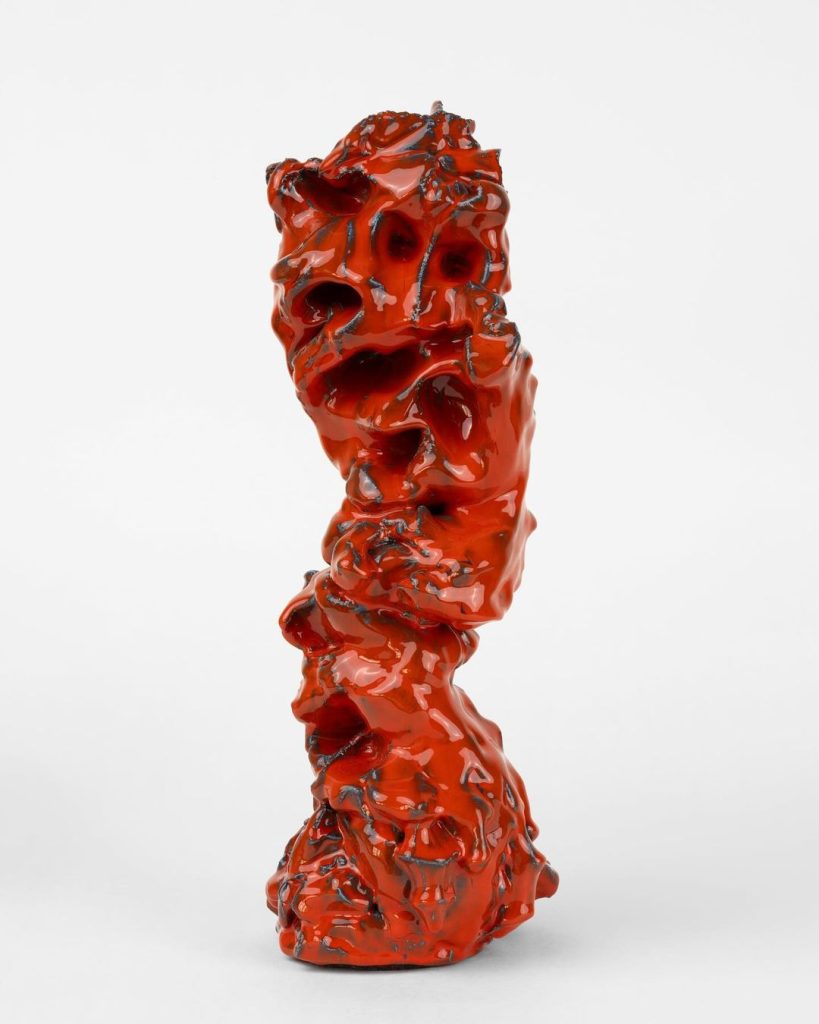
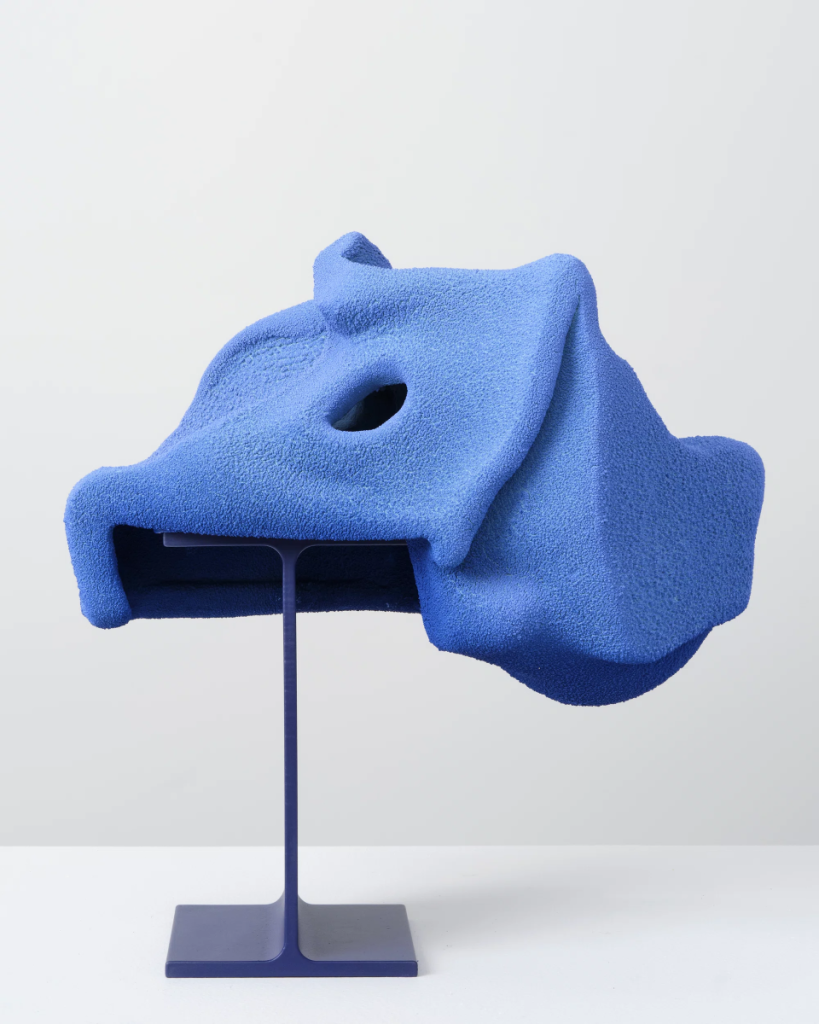
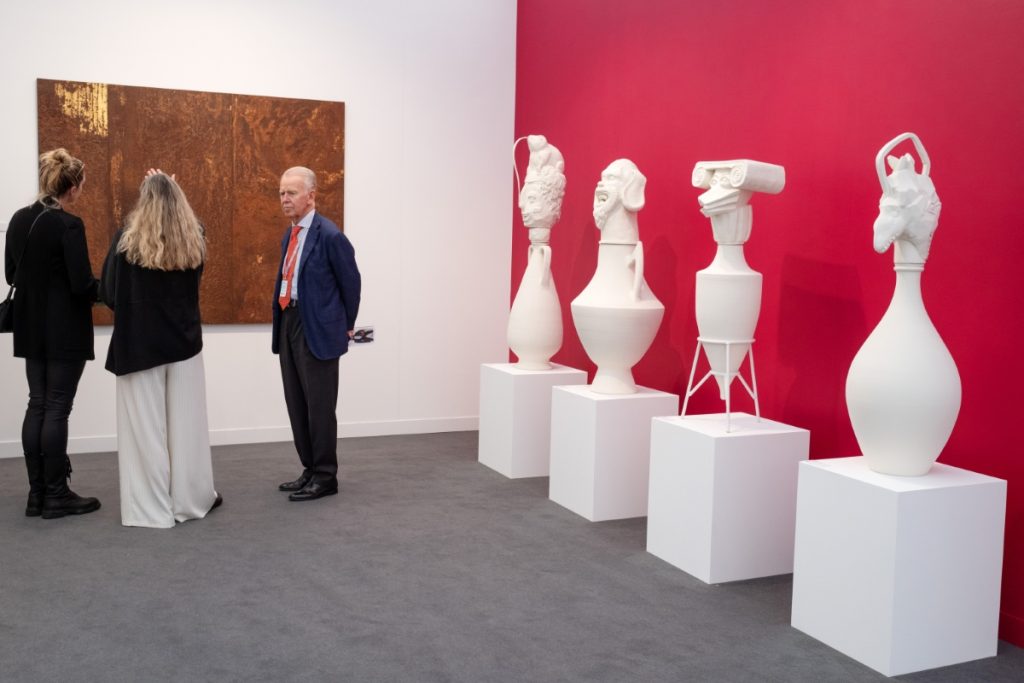
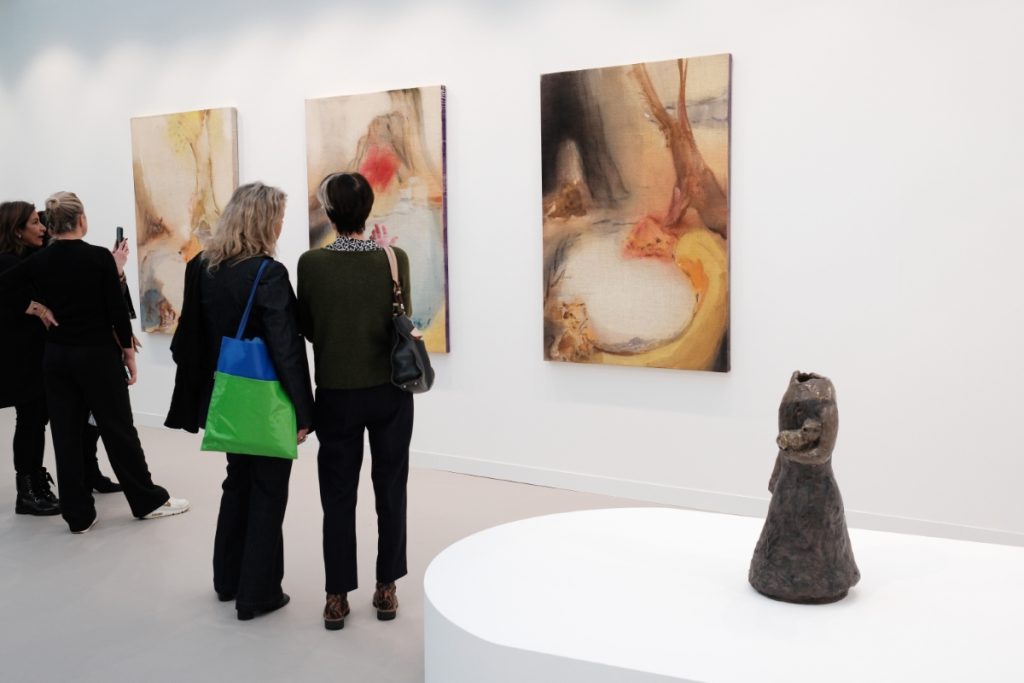
Among more figurative works were those by the Egyptian artist Wael Shawky for Lia Rumma Gallery. His 2023 series, I am Hymns of the New Temples: Pompeii, of which six individual works were shown, seems to play on the aesthetics of ancient amphorae discovered throughout the Mediterranean and the associations of Classical marbles in particular with white, uncoloured surfaces. Each work consists of a matte white amphora in a slightly different shape, with or without handles, surmounted with a monster-like head in a sort of parodic echo of Egyptian canopic jars.
In contrast, the Japanese-Swiss mixed media artist Leiko Ikemura, showing with Lisson Gallery, presented a number of sculptures influenced by the artist’s interest in Japanese Shintoism and feminism, including one in ceramics, Dark Figure with Yellow Miko (1996). This was a mystical figurative sculpture of a headless female form in a dress, holding a small animal with big hollows for eyes, whose yellow underglaze showed through only faintly beneath the very dark metallic grey-black glaze applied over the top.
At PAD, the quality of craftsmanship was extremely high across a range of materials and techniques. Particularly striking was the number of large-scale objects on display. Among the most impressive was Monumental Blue and White Vase (2022), made in white porcelain painted with cobalt blue oxide, by Felicity Aylieff, Professor in Ceramics and Glass at the Royal College of Art, and presented by Adrian Sassoon Gallery. At 190 centimetres tall, the vase towered over most of the visitors. It was so large that it required a team of three artisans at the wheel, working under Aylieff’s direction, to make it at the Xin Liang Big Pot Factory in Jingdezhen, eastern China. The artist’s solo exhibition, Expressions in Blue: Monumental Porcelain by Felicity Aylieff, will be on at the Royal Botanic Gardens, Kew, from 26 October 2024 to 23 March 2025.
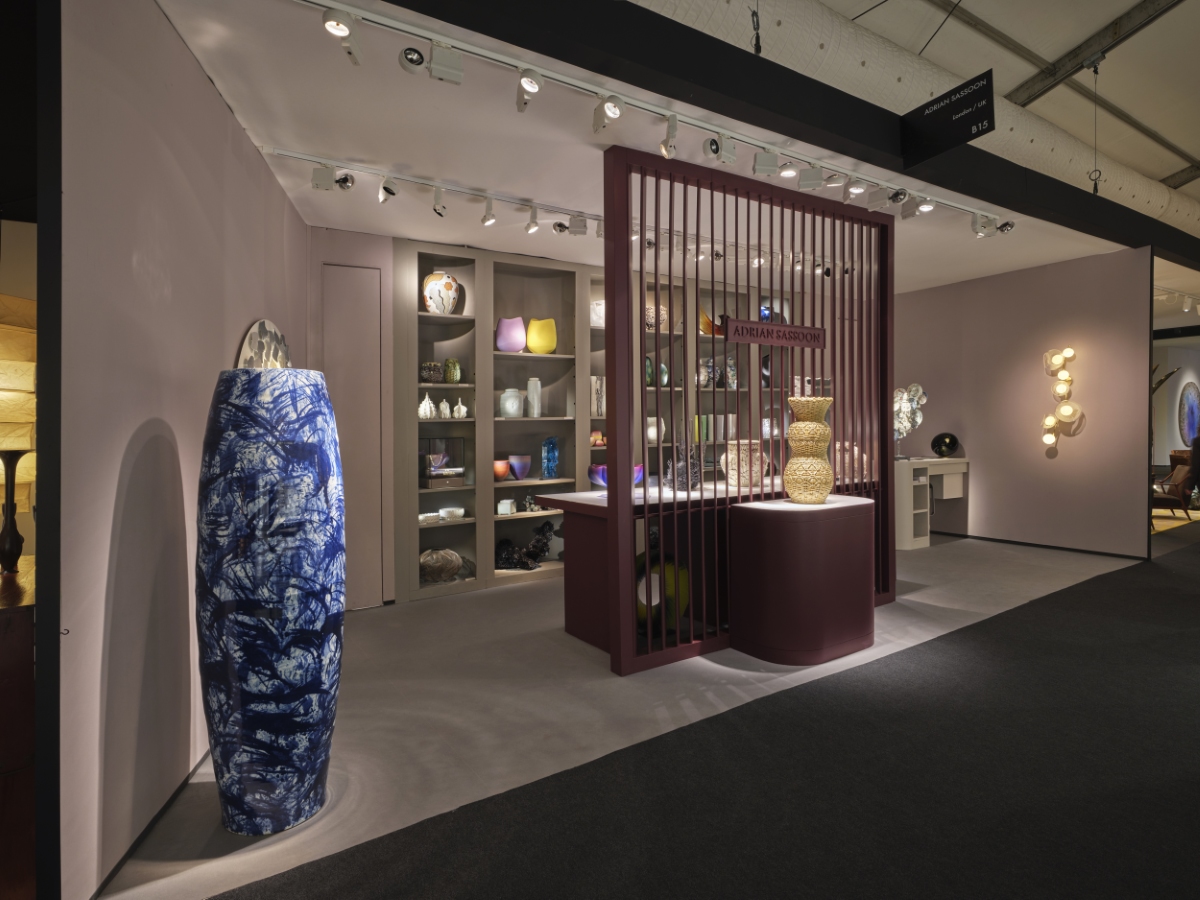
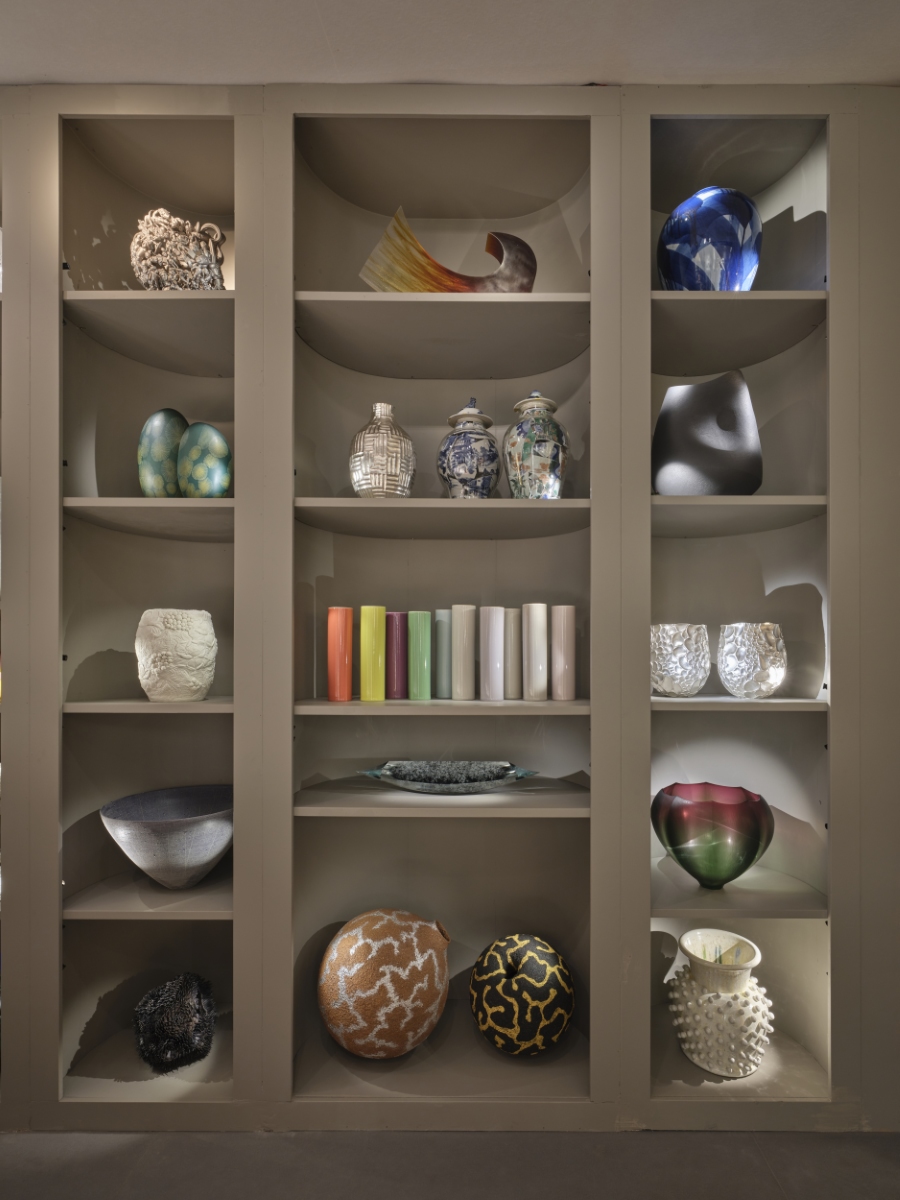
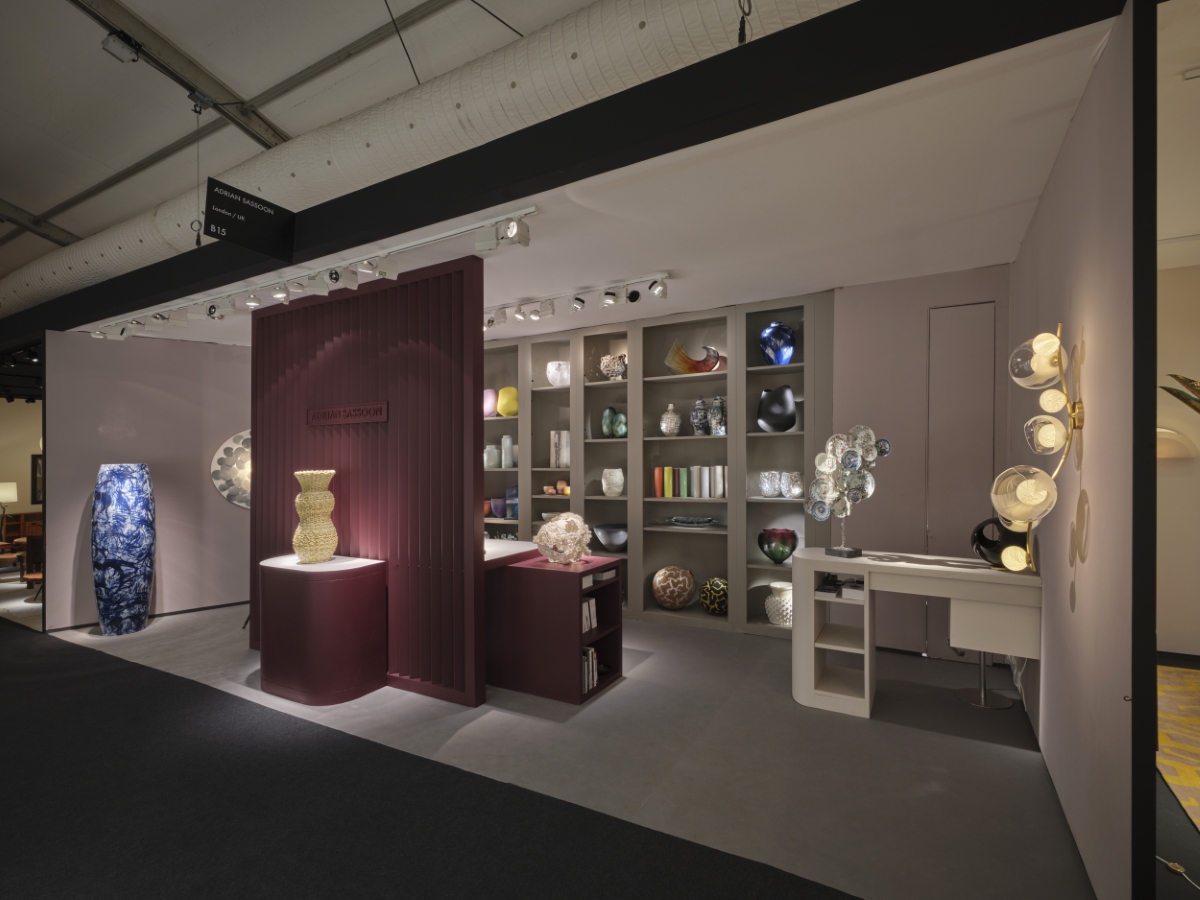
Apart from Aylieff, other captivating works shown by Sassoon were Barangaroo Reed Beds (2024), a collection of vessel-like forms in porcelain by the Australian ceramist Pippin Drysdale. Their coloured, smooth surfaces, inscribed with irregular rows of thin lines, are inspired by the warm, earthy landscapes of Western Australia. Other notable pieces included two tall celadon-glazed porcelain jars by Edmund de Waal; an exploded Qing Dynasty teacup by the Dutch ceramist Bouke de Vries; Foliage (2024), a lighting fixture made of carved and powder-coated Parian porcelain leaf discs by Vezzini and Chen; and vessels sprouting with intricately moulded, carved and hand-built foliage by the Japanese ceramist Hitomi Hosono.
Another gallery with a strong ceramic showing was Florian Daguet-Bresson. Particularly appealing were the seaweed-inspired sculptures of the French ceramist Claire Lindner, some free-standing and others hung on the wall. Their long and curling tendrils in red, green and blue were coated in a rough-textured glaze that evokes the bubbles of bladderwrack. Other ceramists of note at this gallery included Jin Eui Kim (see discussion in Ceramics Now, 21 May 2024); up-and-coming British ceramist Faye Hadfield, who specialises in rockstar-style ‘happy’ and ‘scary’ vases; and Timothée Humbert, whose works included a human-sized, box-like blue and white ceramic figure half way between a monster and a totem.
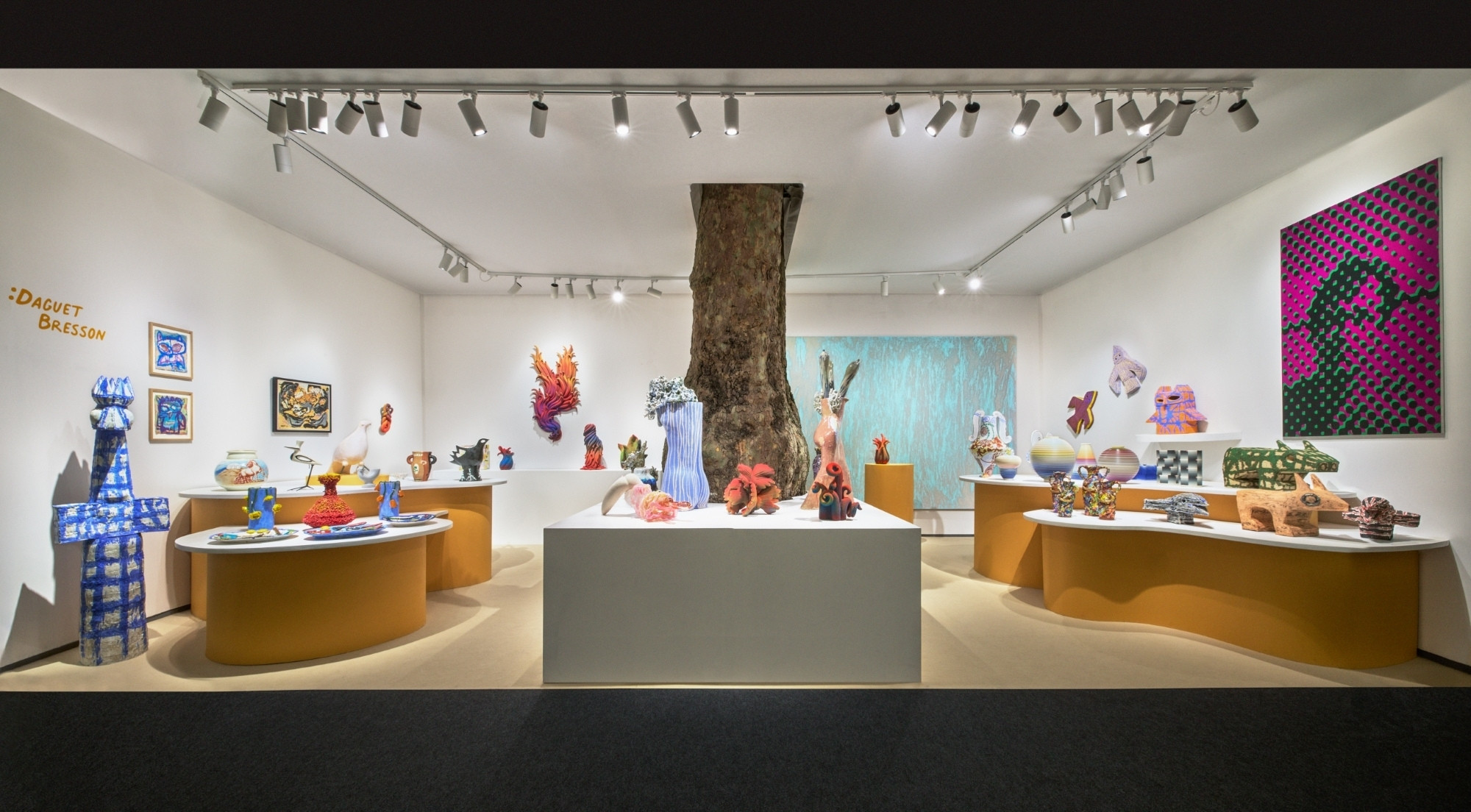

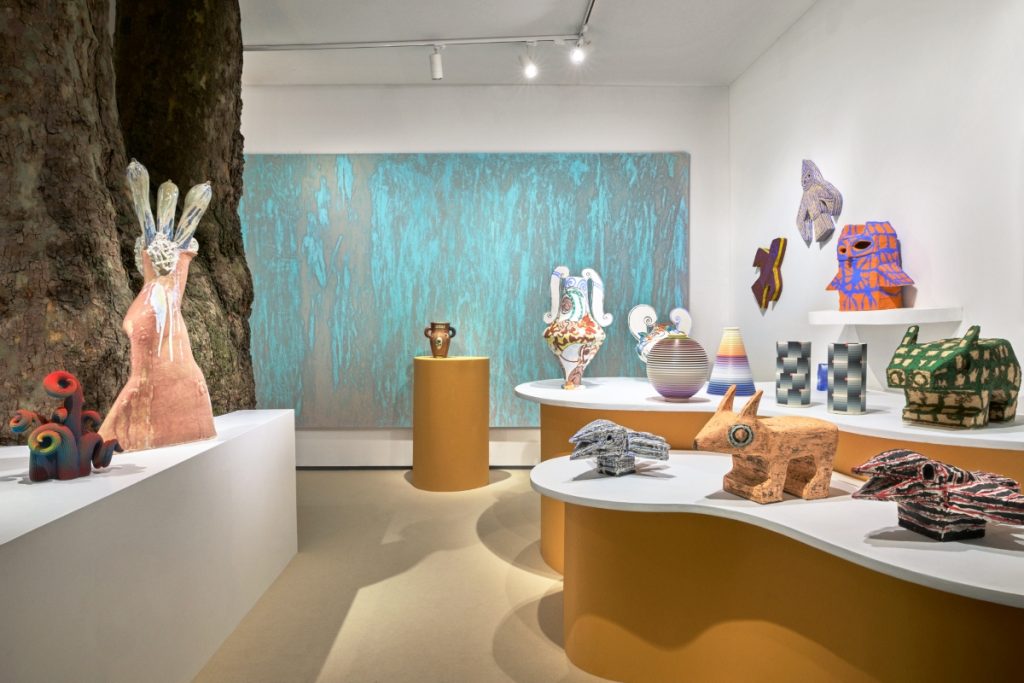
Two other galleries with notable large-scale pieces were the Carpenters Workshop Gallery and Tristan Hoare. At the CWG’s stand were vessels by the German ceramist Roger Herman, Professor of Fine Arts at the University of California, Los Angeles. Irregular and asymmetrical in form, glazed in a dripping patchwork of bright colours, and marked with unexpected holes, knobs or handles, these vessels conveyed a forceful sense of personality. Tristan Hoare’s collection of glazed stoneware vessels were taller, slenderer and in more recognisable, symmetrical forms. Made by the American ceramist Peter Schlesinger, who won PAD’s Contemporary Design Prize, they adopted a more reserved colour palette, incorporating faded browns and blues recalling, perhaps, ancient patterns based on geometry or plant motifs.
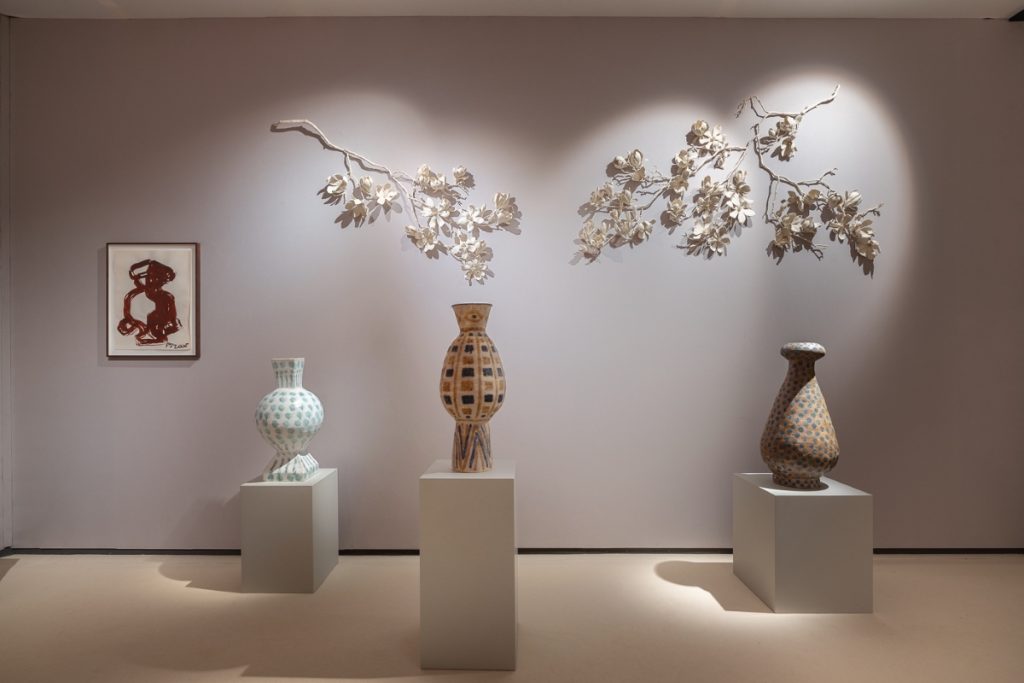
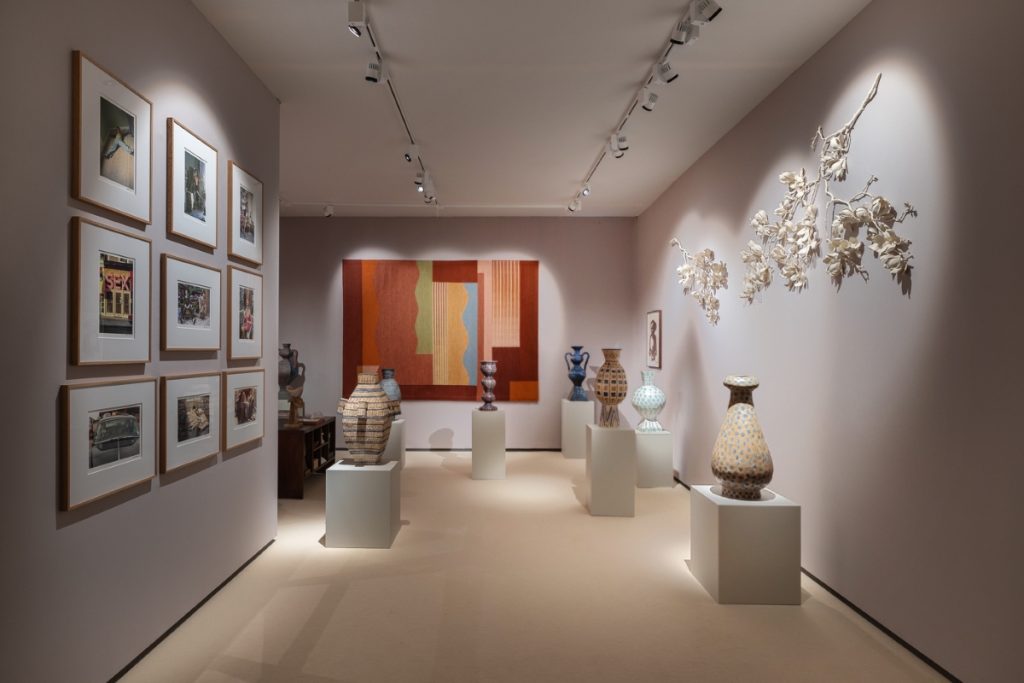
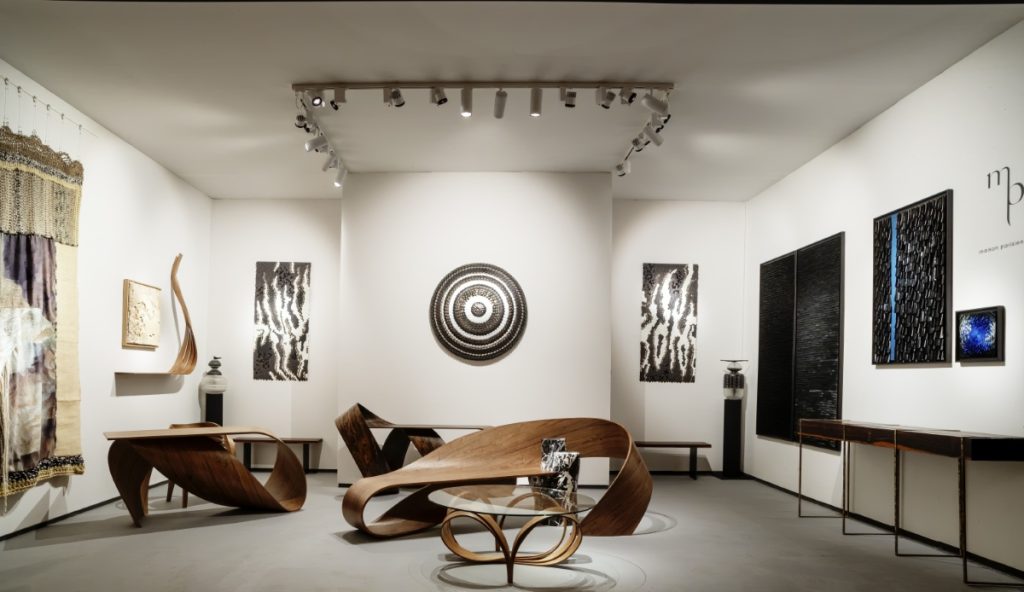
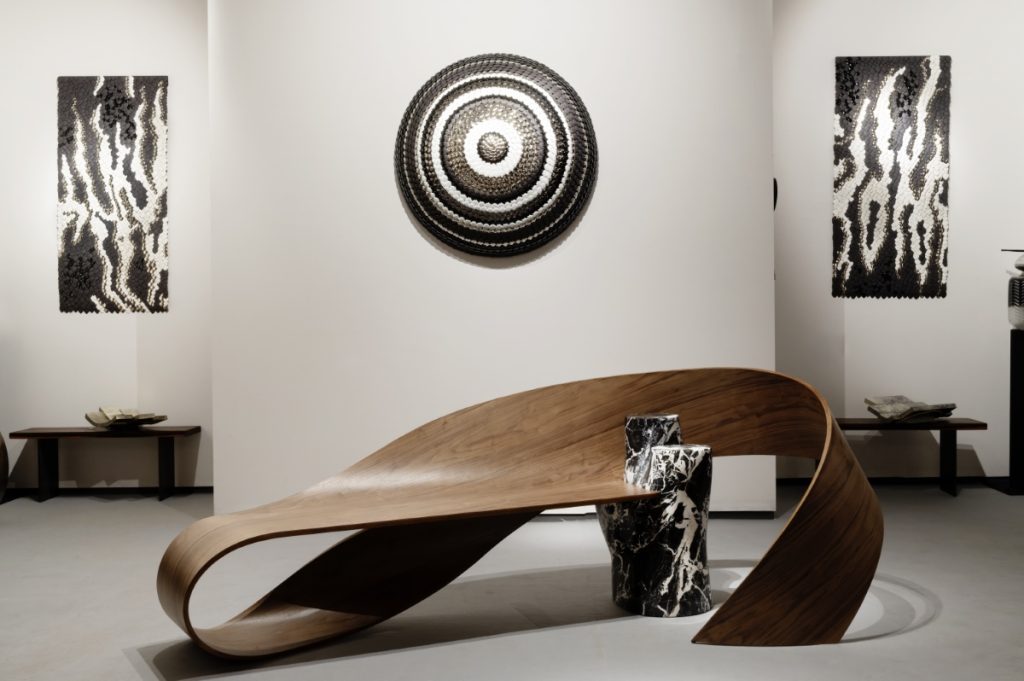
As demonstrated by ceramists like Hitomi Hosono and Vezzini and Chen, porcelain is a particularly suitable medium for the elaboration of fine details, but it can also be built up in sections to create larger-scale works. The latter technique was used by the French ceramist Juliette Clovis, showing with Maison Parisienne. Clovis makes hundreds of small porcelain ‘scales’, individually glazed and fired in black, grey, white and metal oxides, and then fits them together like a three-dimensional jigsaw. One of her most striking wall-works is Aankh (2023), a giant convex structure like an ancient shield, with a diameter of 108 cm and a depth of 32 cm, whose concentric circles in different glazes evoke the texture and patterns of snakeskin.
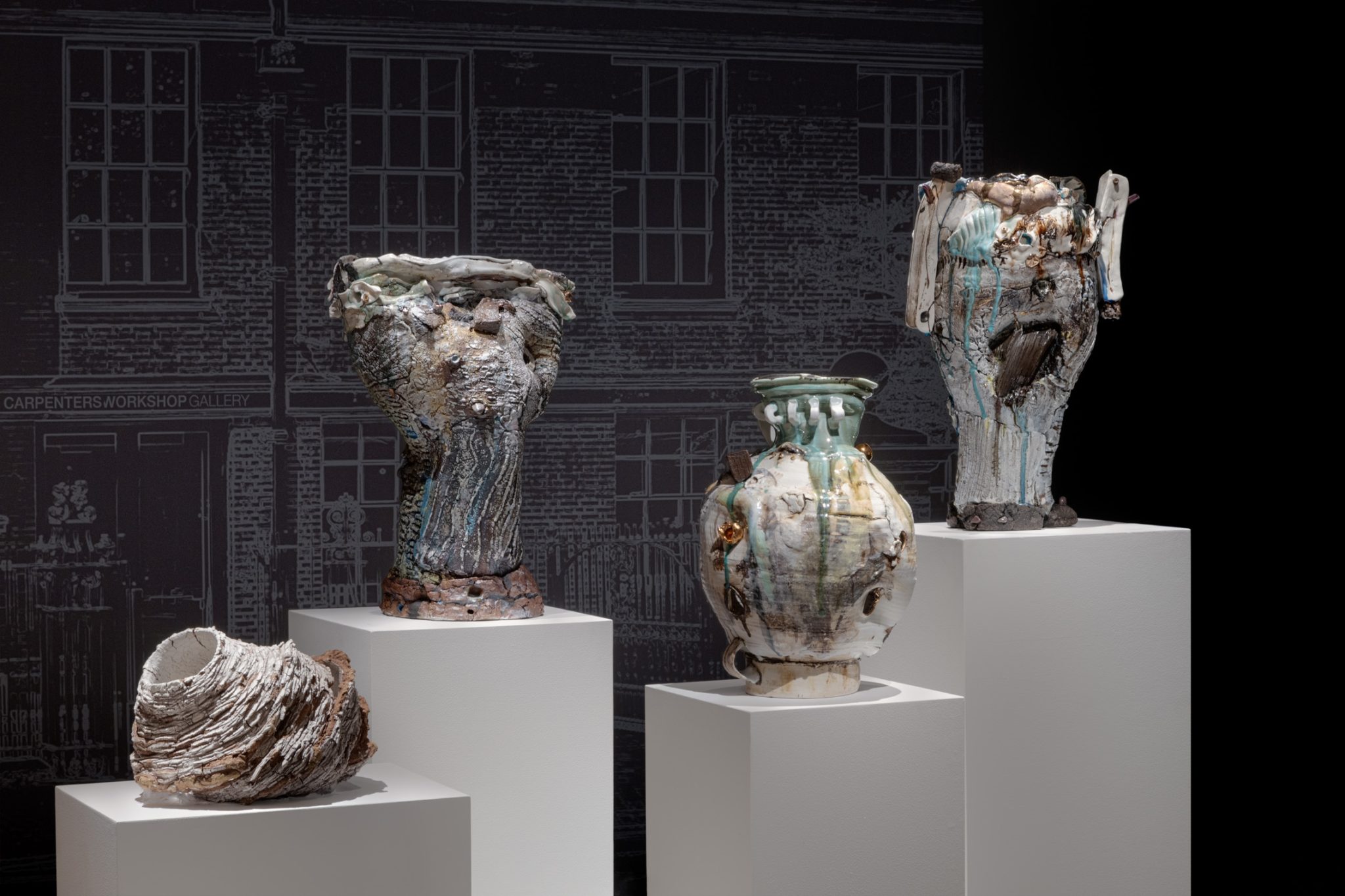
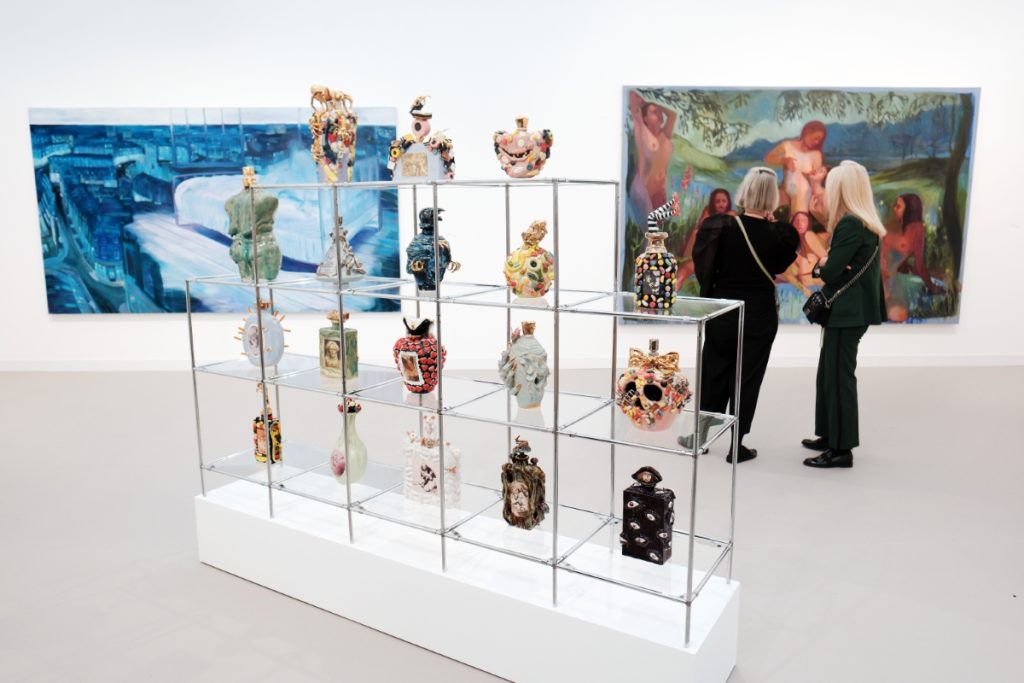
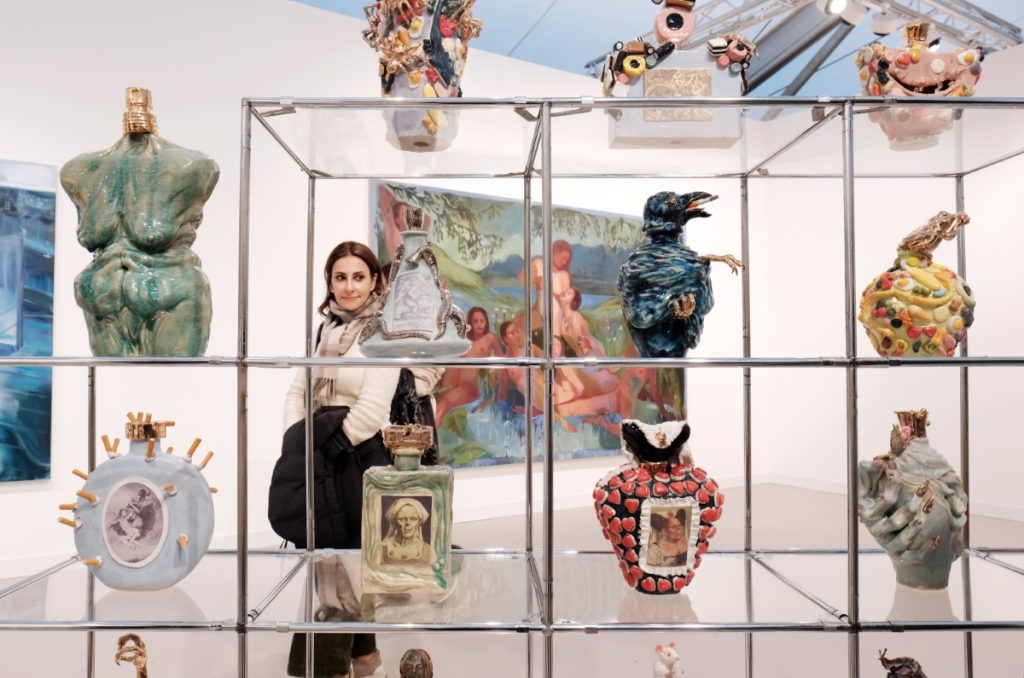
Altogether, PAD and Frieze demonstrated the enormous versatility of ceramics for the creation of works that are beautiful or expressive, conceptual or decorative, or all of these, and the ability of this practice to be used on a scale from the very small to the very large. While there were some broad differences between the types of work found at the two fairs, reflecting their differing foci, there was also an area of overlap, particularly in the use of the vessel form as a starting point or structural foundation for non-functional, expressive works. Compare, for example, Brian Rochefort’s Evening Dew, an explosion of colours and textures for Sean Kelly Gallery at Frieze, with the volcanic ‘Erosion‘ series by Brazilian mother-and-daughter collaborators Nicole and Luisa Toldi, for Brazil Modernist at PAD. Points of resemblance like these suggest that, between the poles of ‘art’ and ‘design’, there is a large grey area of works that could be either – or both.
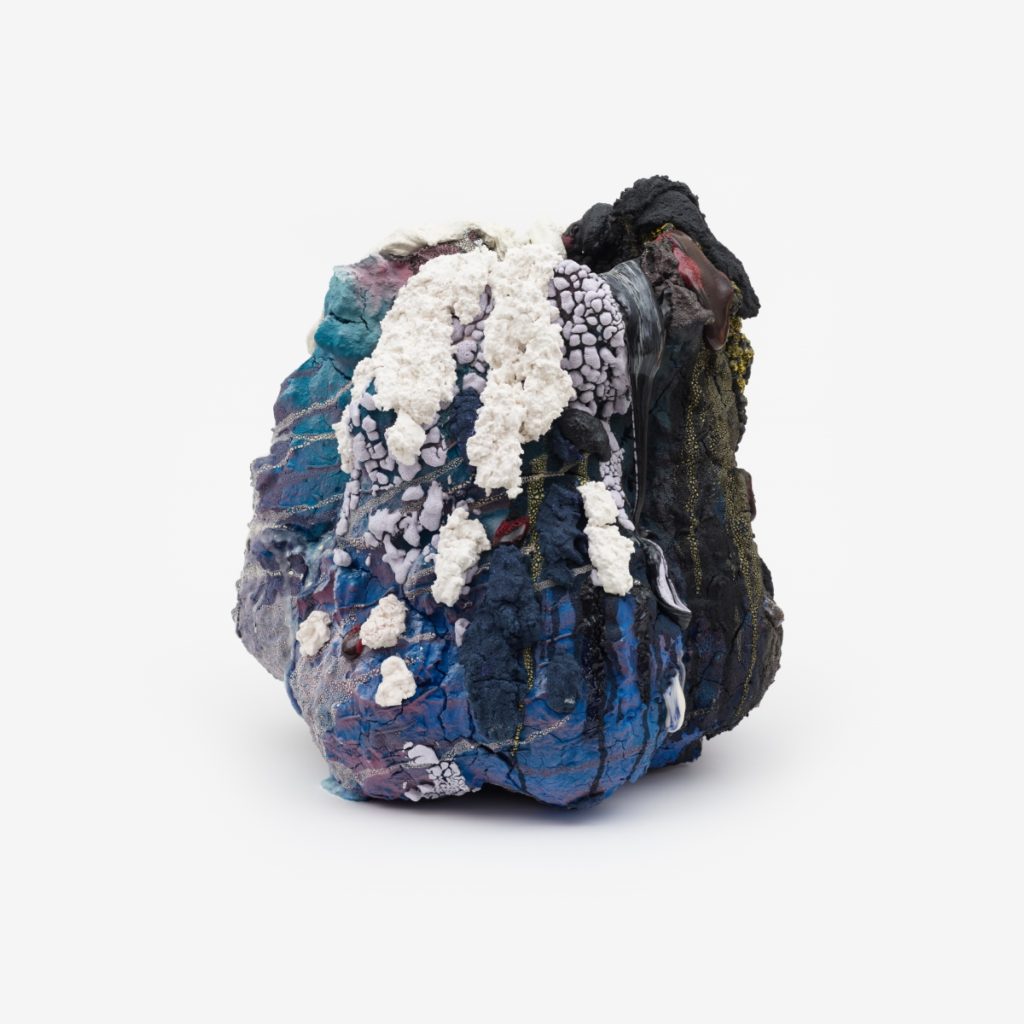
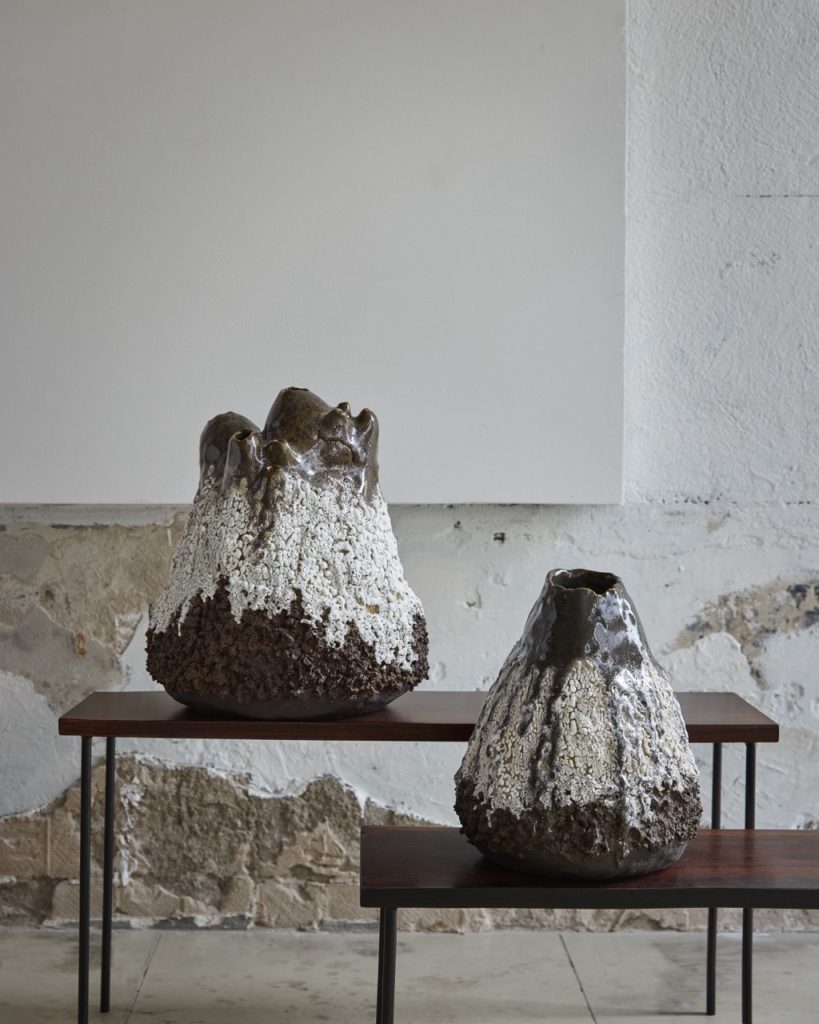
Emma Park is a freelance arts writer and contributing editor at Glass Quarterly.
Frieze London and PAD London took place at the beginning of October 2024.
Subscribe to Ceramics Now to read similar articles, essays, reviews and critical reflections on contemporary ceramics. Subscriptions help us feature a wider range of voices, perspectives, and expertise in the ceramics community.

















Comments 1